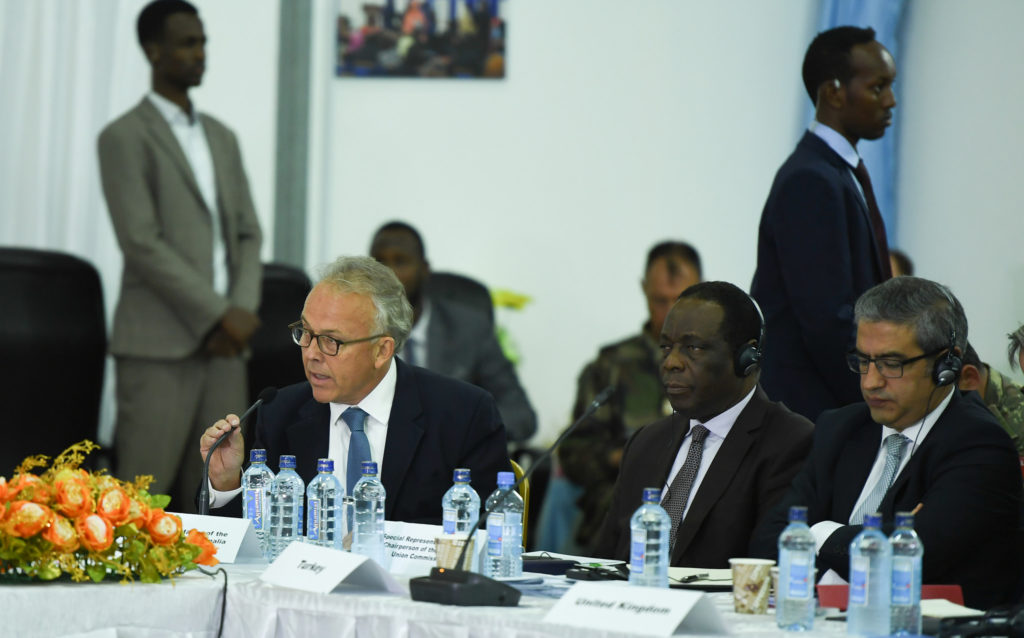Somalia and international partners to craft Amisom exit plan


Somali and international partners Monday agreed to draft a conditions based transition plan with specific timelines to prepare for the Somali security forces to take over security responsibilities from the African Union forces.
An international security conference in Mogadishu which brought together Somali government and international partners among them the UN and African Union representatives noted it was critical to put up a clear transition roadmap.
“The participants agreed on urgent development of a realistic conditions-based transition plan with clear target dates to transfer security responsibility from AMISOM to Somali security forces,” a communique from the meeting read in part.
The plan must be guided by the rule of law, respect for human rights and should include countering violent extremism, stabilization and governance, the stakeholders said. The transition plan will lay the foundations for activity over the coming months and years and will set out the strategy, priorities, milestones and conditions for transition, including on stabilization and state-building activities as well as military, police and justice plans, in order to ensure a lasting peace.
“As a first step all stakeholders would develop a process to plan for transition by 31 December 2017, with a view to completing a draft transition plan before the Joint Review of AMISOM requested by the Security Council in 2018.”
AMISOM EXIT
Coming at a time African Union is withdrawing the first 1,000 troops by end of this month, the meeting also sought to find sustainable funding mechanisms both for Amisom and the newly adopted National Security Architecture which was endorsed during the London conference in May.
Earlier, Somali president Mohamed Abdullahi Farmaajo told the conference his government had made remarkable progressing in implementing the National Security Architecture.
“We agreed the role of Commander of the Defence Forces to re-organise and reintegrate Somalia National Army and appoint the best and the brightest sector commanders,” Farmaajo said. “In this respect, this documented if invested in and properly implemented, we will see Somalia return to complete stability and begin to see a true progress.”
Farmaajo however called for increased international funding to actualize concrete security reforms noting his country did not have the capacity to finance the security sector.
Said Farmaajo, “The current security requirement far exceeds our economic means and we urgently request the international community to increase its diverse and generous support if we are to protect the gains we have made thus far.”
The National Security Architecture envisages the formation of a 22,000 strong military force including 4,000 special forces in addition to 32,000 police force to be shared between the federal and state governments. The first batch of 2,400 troops from the semi-autonomous region of Puntland were this past week integrated into the national army.
UN chief in Somalia Michael Keating reiterated the need for inclusive consultations to ensure the exit plans receive full public support.
“I think while it’s important that we agree among ourselves as you have said Mr. president that it is also important that the Somali public and civil society and parliament is also involved and consulted as these plans emerge to ensure they enjoy full popular support,” said Keating